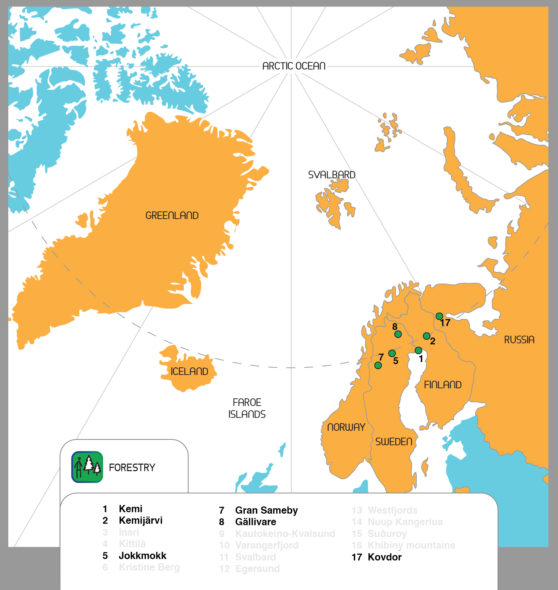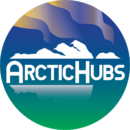![]()
Forestry has been a long-standing sector across large swathes of the Arctic and sub-Arctic region. Traditionally, management and revenues from forestry have come in the form of outtake of biomass for timber and fuel, with little consideration for other uses of the forest.
However, the goals of forestry have diversified strongly in recent decades, emphasizing the whole spectrum of what are termed ‘ecosystem services’ provided by forests.
Ecosystem services are considered as:
the benefits that people obtain from ecosystems, including the direct and indirect contributions of ecosystems to human wellbeing.
Forest ecosystem services (FES) include, among others, carbon sequestration for climate change mitigation and maintenance of habitats for various species – including traditional herding of reindeer.
A major challenge in evaluating the sustainability of new silvicultural methods is that traditional sustainability criteria cannot meaningfully describe and address spatial and temporal complexity. Future studies (such as the ArcticHubs research) therefore, point to the use of cross-disciplinary approaches and recognition of the “big picture” involving interconnectedness between:
- human actions (e.g. spatial planning)
- environmental (climatic) variation
- biological responses at different functional levels (including consideration of ecological networks) that operate in young, dense forests now and in the future
As a consequence, an ecosystems services approach is needed to identify synergies and potential conflicts between different objectives and to design silvicultural measures to enable sustainable multiple use of forest resources.
How is ArcticHubs entering this realm?
Set against this background, the ArcticHubs project will be focusing on the following activities:
- To identify areas requiring adaptation of forestry measures due to other uses of forests (e.g. reindeer husbandry, tourism) using participatory tools such as PPGIS, and remote sensing
- Testing the possibility of using more precise automated forestry machinery
- Assessing the roles and implications of global companies’ active in the Arctic
- Analysing the environmental impacts of forest industrial hubs in relation to companies’ social license to operate (SLO)
- Evaluation the sustainability of increased timber use, particularly where there are planned investments in new wood processing industries
Where are our hubs?
The six forest hubs selected by the ArcticHubs project for closer research and analysis, are clustered in the North of Fennoscandia. They include areas that are seeking to balance land-use with mining or tourism interests, along with the concerns of traditional indigenous herders.
Some hubs have been identified for the growing interest from foreign global investment, and many are having to address the strains of de-population.

Sweden (Jokkmokk #5, Gran Sameby #7, Gällivare #8); Finland (Kemi#1, Kemijärvi #2); Russia (Kovdor #17)
Core ArcticHubs questions
The research questions at our Arctic forest hubs, explore how forestry practices are adjusting to co-production with a variety of other ecosystem services.
The research will be clustered around some of the following debates:
- Acknowledgment, dialogue and connectivity across multiple forest land-uses, with the application of innovative smart forestry tools.
- Participatory approaches and how to reach more holistic consensus to feed into policy or practice solutions.
- More specific questions will consider the balances required around management of national park areas and their conservation, with other uses such as tourism or the gathering of non-timber products (e.g. wild berries, mushrooms, medicinal plants).
- Challenges to build and sustain employment, with responses to emerging job opportunities looking for solutions to the challenge of finding gender balance and the provision of appropriate local skills services.
- Consideration of investment from global companies and the environmental implications of expansion or adaptation from pulp to other wood-based products such as cardboard – through methods including foresight analysis of sustainability of use of wood biomass.
ArcticHubs research is connected closely to Forest Ecosystem Services (FES) models, which with increasing urgency are being sought to provide sustainable and adaptable solutions to changing woodland landscapes.
